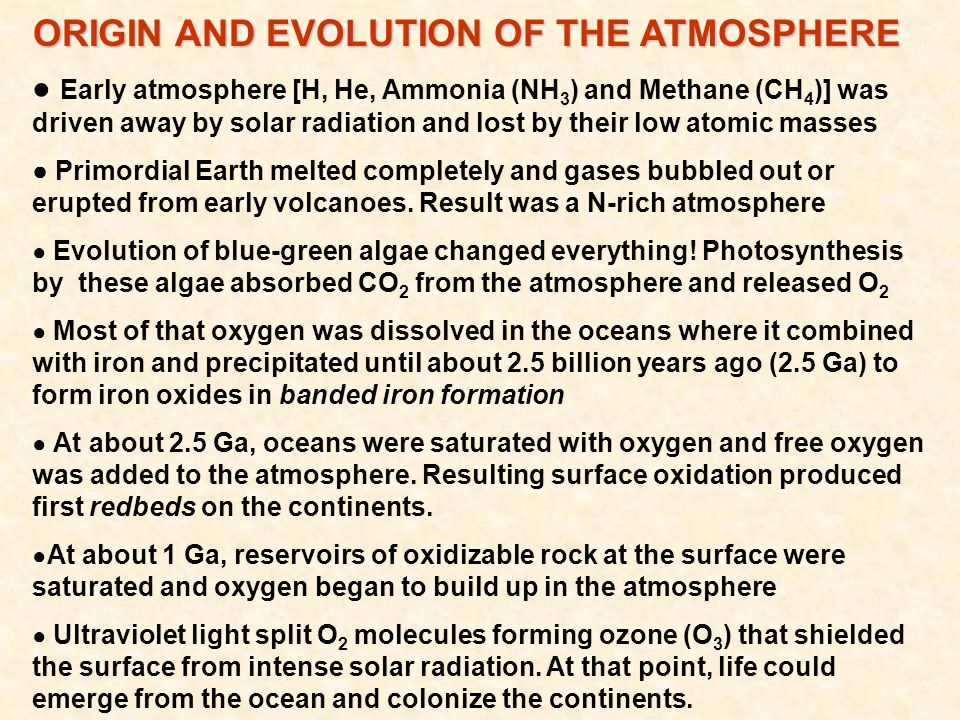The origin of the atmosphere
.jpg)
The atmosphere extends upwards for many hundreds of kilometers. Its upper boundary, at an altitude of about 2,000-3,000 km, is to a certain extent conditional, since gases, its constituents, gradually dissolving, pass into the world space. With the altitude, the chemical composition of the atmosphere, pressure, density, temperature and other physical properties change. Chemical composition of air to a height of 100 km. does not change significantly.
Since hydrogen and helium are the most common elements in space, they undoubtedly belonged to the protoplanetary gas-dust cloud from which the Earth originated.
This served as a stimulus for two processes: the gradual dissipation of hydrogen and helium and degassing of the Earth's mantle. The Earth lost its hydrogen-helium atmosphere and created its own primary atmosphere from the gases released from its bowels.
The next stage in the development of the atmosphere was transitional - from abiogenic to biogenic, from regenerative conditions to oxidative.

The last stage of development of the atmosphere is connected with the appearance of life on the Earth and, consequently, with the appearance of the mechanism of photosynthesis. Gradually, the content of free oxygen - this time biogenic - began to increase. In parallel, the atmosphere almost completely lost carbon dioxide.
The absence of oxygen in the primary atmosphere was at one time considered a condition unfavorable for the emergence of life, since ultraviolet rays, not absorbed by oxygen molecules, reached the earth's surface unhindered.
great content! and thanks again for following!